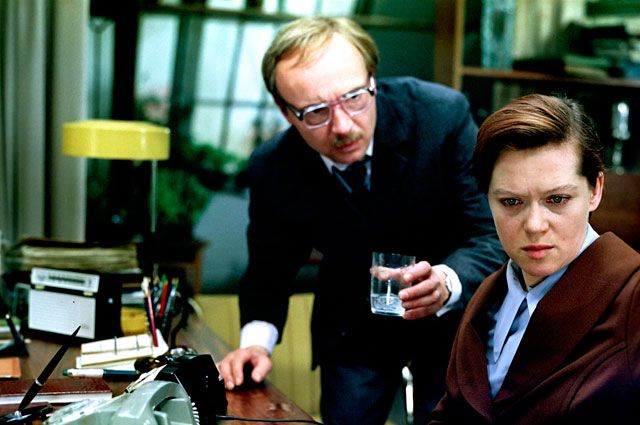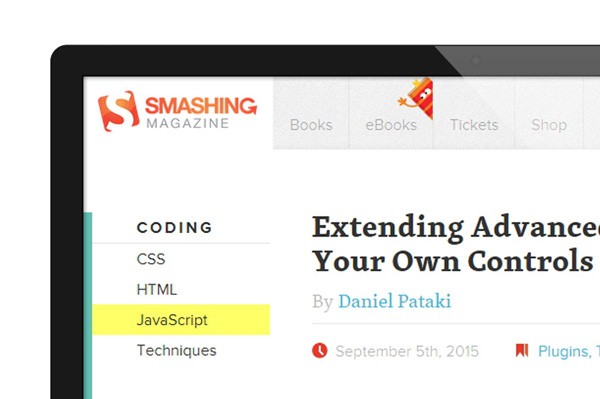7 rules of successful work with a designer
7 rules of successful work with a designer
The Icondesignlab studio team has compiled a list of useful tips for customers on working with designers.
These tips will be useful in drawing up an assignment for a future project, commenting on intermediate results and proper communication with designers at all stages of work.
How not to kill your web designer
Does this question seem funny to you? This means that you have not yet translated a pack of paper in order to hammer into an incomprehensible designer the concept of your project. For the tenth time, they did not return the options for the unsuccessful sketches. And instead of the expected cool design, they did not get the result, culturally speaking, “daub”.
Why is it sometimes so difficult for customers to find a common language with designers? We analyzed our ten years of experience, unsuccessful projects and are ready to share recommendations that will save your nerves and the designer’s life.
Even working with a real professional sometimes turns into a living hell and gives rise to a desire to kill each other. In this article, we will not consider the mistakes of the performers and discuss the curvature of their hands. Here we will focus on those situations where the failure of the design is a consequence of the behavior of the customer himself. You will find out what phrases can finally finish off even a real pro.
Relationship between the customer and the designer
There are 3 types of client-designer relationship:
Type one – “Client and Chef”
You want to order a website design, open the “menu”, look at the prices, portfolio, choose what you like, and order your “dish” with the words: “Just change a little here, but take this away – we don’t like it.” In this case, you completely and completely rely on the boss, i.e. designer. The advantage of such a relationship is that you do not participate in the work, but completely trust the tastes of a professional. But there is a huge disadvantage: even an excellent designer-chef sees you for the first time, does not really know anything about your project, which means that he may not take into account the specifics of your work and not guess your tastes.
 The face of the customer who withdrew from work on the design and received the wrong thing
The face of the customer who withdrew from work on the design and received the wrong thing
Type two – “The driver of a driving school and his student”
You, as a driver, seem to have let the designer drive, but you comment on all his actions, watch with a keen eye, indicate what and when to press. And when patience breaks, you can also grab the steering wheel and press the pedal for it. Here, the plus is that you are aware of the progress of the project, your tastes are taken into account. But otherwise, one solid minus. You forget that the driver knows driving perfectly, but you don’t know the web design. It’s the designer who spent years learning his craft and gaining experience, not you. When a customer pretends to be a driving school instructor
When a customer pretends to be a driving school instructor
Type three – “Business partners”
The conditions are equal here. You provide information about the project as extensively and specifically as possible, set a goal, and according to your explanations, the designer makes sketches. Then you discuss them together, come to a common opinion and result. Everyone does their own thing, what they know best. This is exactly the relationship that you need to strive for. Below we will tell you how to achieve this.
7 simple tips on how to talk to designers
Over our 10 years of experience with customers, we have highlighted 7 simple tips on how to talk to designers. We will give them to you later in this article, and with them some killer phrases that must be avoided so as not to drive the designer crazy. These are the rules:
1. Describe your project and its goals as specific as possible before starting work
An excerpt from the movie “The Diamond Arm”
Phrases like:“Do something beautiful”, “I want it so that it clings” or “You draw, and then we’ll see” Is a taboo.
For a successful result, your participation in the work is inevitable. Explain to the designer in accessible language what you want to achieve, even before he starts work. And it is better to correctly draw up a technical task, show examples that should be guided by.
2. Do not indicate how to change, explain why
My grandfather never trusted doctors He always treated himself according to an old recipe book … He was a good old man. He died of a typo in his old book … (from the Internet)
Imagine you are on the operating table. You don’t tell the doctor: “Give me 2 adrenaline cubes”, “Cut the appendicitis to the right!”, “The stitches on the seam are not symmetrical, let’s redo it”? You explain the problem and choose a specialist you trust. So? Do the same when working with a designer. He studies his craft first at an art school for 4 years, then at an art university for 5 years, then gaining practical experience at work. A good designer has been studying his craft for over 10 years. If you yourself are not a professional in this area, the designer knows better than you how to do it right.
Therefore, exclude from your communication with the designer any moralizing phrases and direct instructions on work. Tell us what you want to get as a result.
For example:
Wrong: “Make the background white and add a smiling girl to the right corner.”
Right: “I want the site to be light and more positive”…
Wrong: “Increase the thickness of the border by 2 pixels.”
Right: “Element edges should be more explicit”
Wrong: “Make 50 pixels at the top, 30 pixels on the sides, and leave it as it is at the bottom.”
Right: “There is a feeling of overcrowding. The elements need more freedom. “
The designer doesn’t have to become your brush, you don’t have to paint with them. Otherwise, he will lose his muse, and your project will lose his life. Give him freedom of thought, slightly outlining its outlines. In other words, be as specific as possible about the purpose of the changes you want to achieve, not how to change.
3. Express your specific wishes in the form of a question
In continuation of the last point, a small life hack. What if you know exactly what you want to change in the design? How to achieve your goal, but not kill the desire to create in the designer?
Very simple. If you have a specific request, express it in the form of a question.
For example:
Wrong: “Make the background white.”
Right: “Can we make the background white, what do you think?”
Wrong: “Let’s change the font.”
Right: “Maybe try another font, what do you think?”
The assignment, submitted in the form of a question, involves reflection and discussion. An assignment given in the form of an order is categorical obedience. So ask more questions if you want a designer who thinks with you.
4. Talk about what you don’t like as early as possible.
Do you remember the story of O. Henry “Peaches” and his heroine, who sent the newlywed for a peach? He went through many trials, but still got her the unfortunate fruit. Only she finished him off with the phrase: “Did I ask for a peach? I’d rather eat an orange. ”
We had customers, the stages of work with which can be described as follows: Everything is good, we like it -> Everything is good, we like it -> Everything is fine, we like it -> Oh, we showed the layout to our director, he does not like it at all, we need redo everything.
You always have the right to radically change the concept or make drastic changes, even at the final stage. But everything that goes beyond the terms of reference is paid separately. Therefore, figuratively speaking, if in the terms of reference and at the first stages of work you asked for a peach, and at the end you decided that you need an orange, then you will have to pay for both the peach and the orange.
Hence the conclusion: Review sketches and comment on work options on time. If you don’t like something, something confuses you, the requirements have changed – speak immediately and directly. This will save the designer’s time and money.
5. Show what you want with examples
Sometimes it is simply impossible for the customer and the designer to come to an agreement, because they speak different languages. The customer – in the language of business, wants to create a selling item, and the designer – in the language of beauty, thinks how to make such a design so that later it would not be ashamed to fill it in the portfolio. What to do in such a situation?
Show the designer your desires visually, do not be lazy to find examples of the works you like. It is much easier to explain what style the logo or icon should be when you can just point your finger at the picture. Better to see once than hear 100 times. In addition, you can easily find out where to get examples of high-quality icons by clicking on this link.
6. Don’t insult the designer and his creations

It’s easy to offend a designer
Any creative person is anxious about his creations. In our practice, we came across customers who liked to insert a strong word in a conversation with designers. Phrase like: “The presented option is not what I expected” write for a long time and therefore they replaced it with a short “Crap” or something else. That’s just after phrases like: “What the hell is this?”, “Damn what!”, “Bullshit” and even much stronger words, the designer’s hands fall, the desire to create disappears, and with it your chances of success.
But this does not mean that you should be silent. Talking about what you don’t like is possible and necessary. Just do not try to describe the works themselves in negative words. Better to explain what exactly does not suit you and why. For example, you might say: “Does not correspond to the TK”, “I don’t like it because …”, “The idea is not disclosed”… Any criticism should be constructive.
7. Don’t bother the designer at the start
Pixel-by-pixel refinements take place only at the finish line. In the finale, you can correct and comment on any little things. But this absolutely cannot be done when the first sketches are brought to you.
The purpose of the sketch is to show the idea, to establish the main images and to direct the thought process in the right direction. Your task is to understand the idea of the designer, not the quality of execution. “Why are the lines so crooked?”, “What is this scribble on top?”, “What is this? Did someone paint my logo or someone else? ” – a couple of such questions at the start, and you drowned creativity in a quagmire of nagging.
Let’s summarize
To save your nerves and the life of a designer, you need to build partnerships with him, which means:
– competently draw up a technical assignment;
– do not interfere with the designer to do his work;
– to say in time what you don’t like and what to change;
– use examples if it is difficult to explain;
– do not offend the work;
– not to speak in an orderly tone, but to offer in the form of a question;
– leave the editing of the little things for the final.
Also, don’t forget to compliment the designer. It inspires and inspires for the best result.
Source: icondesignlab.com
Cover photo: ShutterStock
…


